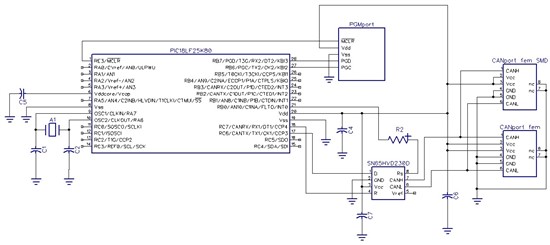Hi,
I'm using SN65HVD230 CAN transceivers to form a network of sensors. I'm using a baud rate of 100kz and a resistor (R2)
of 50kohm is connected to Rs pin to ensure that transmission will suffer low level of noises. The system works
well for a few days but fail randomly after that and I measure a resistance of a few kilo ohms between Vdd and
CANH (the same measurement read infinite at the beginning of the experiment). If I disconnect power for enough
time everything works again for a few days.
- my network consists of 16 nodes only
- each SN65HVD230 is powered (between 3.0 and 3.3V) continuously (I do not use standby mode)
- I use 6 core flat modular telephone cable for the network (CANH, Vdd, Vdd, Vss, Vss, CANL)
(http://www.altronics.com.au/index.asp?area=item&id=W2313)
- when not transmitting (recessive) the microchip microcontroller drive D pin high ("CANTX pin will drive VDD
when recessive")
Any help will be greatly appreciated,
Thanks,
Jerome


